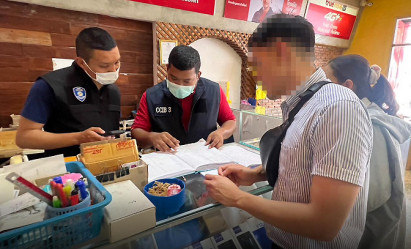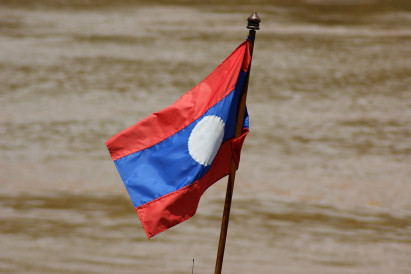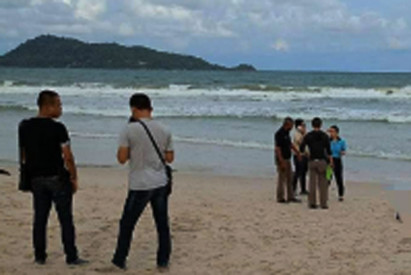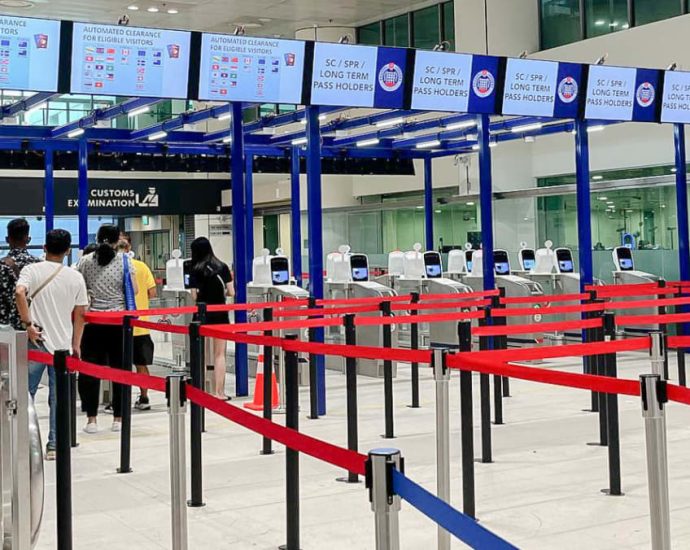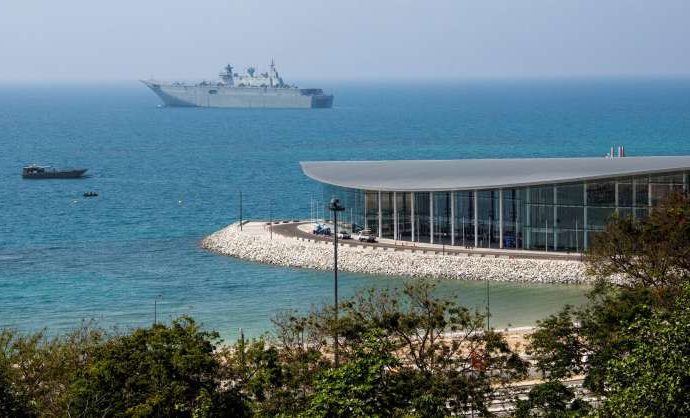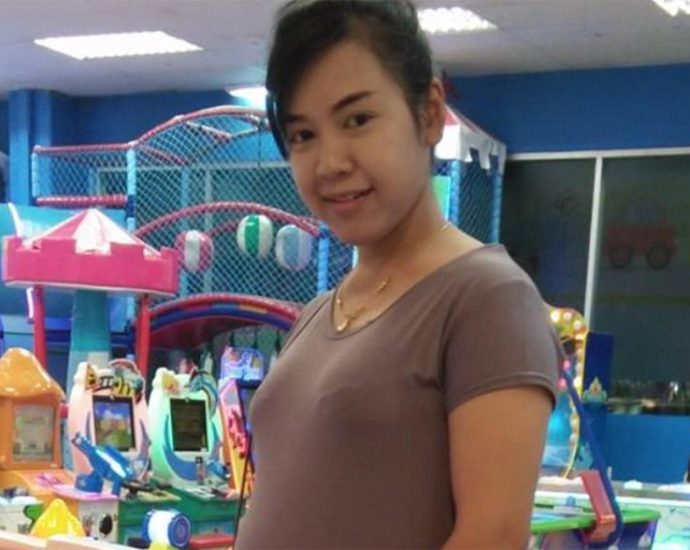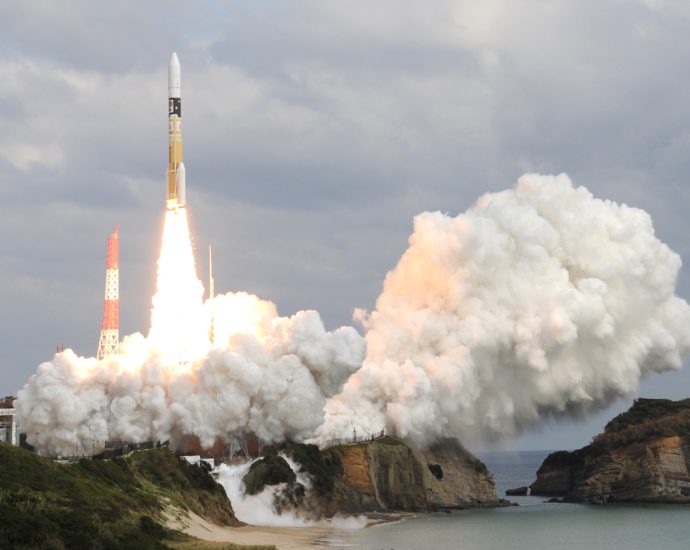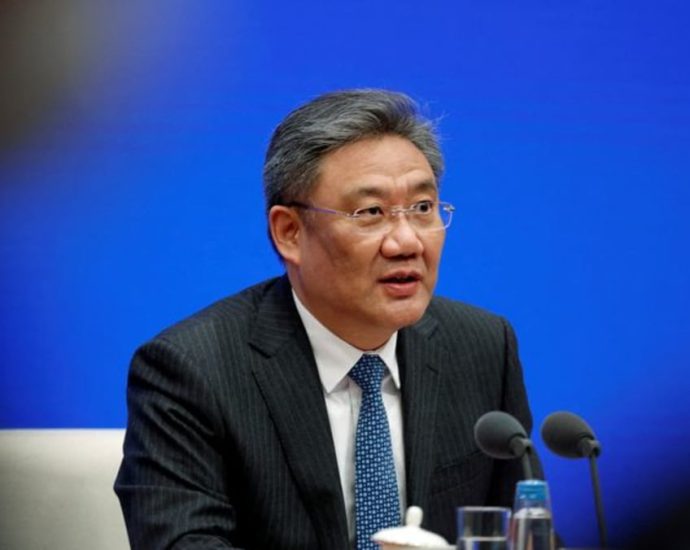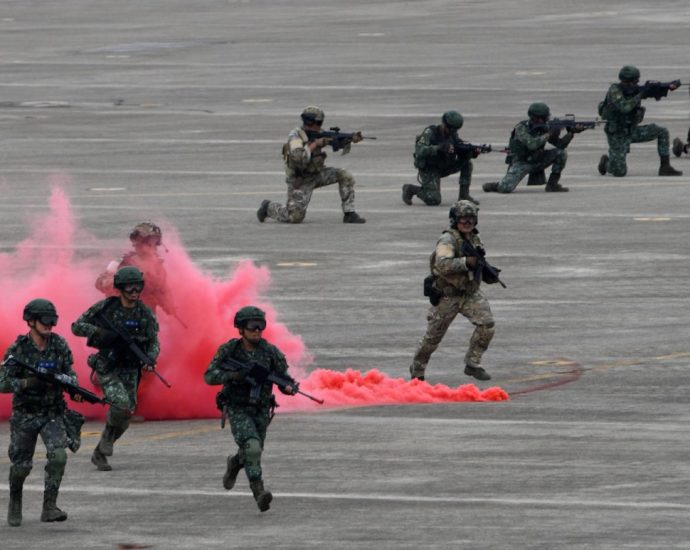Illegal SIM card store linked to call centre gangs busted
Investigators track down Nong Khai shop by tracing comments of online buyers
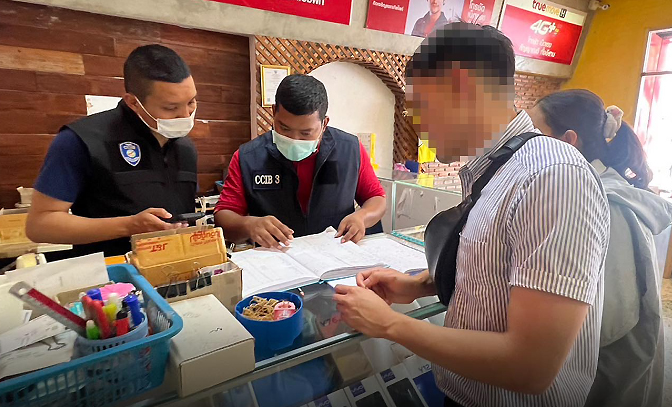
Cyber Crime Investigation Bureau (CCIB) officers have shut down a store selling illegal mobile phone SIM cards in Nong Khai with ties to fraudulent call centres.
The bust, led by CCIB commissioner Pol Lt Gen Worawat Watnakornbancha, took place in Muang district of the northeastern province on Saturday, in accordance with the Technology Crime Prevention and Suppression Act.
Police were able to locate the store after tracking online comments made by buyers. The store operated through a web-based front, falsely claiming to offer registered SIM cards ready for use and garnering numerous positive reviews.
Using the information obtained from the reviews, authorities staged a sting operation targeting Kitipat Telecom, identified as a physical store within the distribution network, luring it into selling registered SIM cards.
Police said the owner of the shop, identified as Kitipat Jirasitkarun, 56, admitted that the SIM cards being sold were registered under other individuals’ names. He has been charged with supplying illegal mobile phone numbers.
During the operation, the officers seized 180 SIM cards that had been prepared for distribution, with an additional 496 cards awaiting purchase.
The seizure is part of an ongoing effort to combat call centre gangs, as they regularly purchase registered SIM cards to carry out illegal activities.

Lao activist’s killing in Isan raises questions
Rights group demands proper investigation of shooting in Ubon Ratchathani

Rights activists are calling on Thai authorities to impartially investigate the killing in Ubon Ratchathani of an exiled Lao political activist who held UN refugee status.
The body of Bounsuan Kitiyano was found with three gunshot wounds in the forest in Sri Muang Mai district of the northeastern province bordering Laos on May 17, Human Rights Watch (HRW) said. The initial police investigation indicated that he was shot while riding alone on his motorcycle through the forest.
Police said Bounsuan had been living in Thailand for the past four or five years, Radio Free Asia reported.
He reportedly had plans to go to Bangkok in the near future to file documents so that he could go to Australia as an asylum seeker.
His body was transported to a nearby hospital for further investigation, but by May 19 it had already been collected by a friend for ceremonial burial purposes, police said.
“This cold-blooded killing of a prominent exiled Lao political activist demands an immediate response from the Thai authorities,” said Elaine Pearson, Asia director at HRW. “The Thai government should urgently conduct a credible and impartial investigation into Bounsuan’s death and bring to justice all those responsible.”
Bounsuan, 56, was a former member of the Free Laos group and was recognised as a refugee by the United Nations Office of the High Commissioner for Refugees (UNHCR). He had been involved in several protests in front of the Lao Embassy in Bangkok calling for respect for human rights.
The killing of Bounsuan in Thailand sends a spine-chilling message that nowhere is safe for critics of the Lao government, said HRW.
On April 29, an unidentified gunman shot and seriously wounded Anousa Luangsuphom, an activist and online critic of the Lao government, in the capital, Vientiane. His family initially reported he was dead as they feared retribution. It later emerged that he was alive and supporters subsequently managed to get him out of Laos for further medical treatment.
Even activists who have fled persecution in Laos to neighbouring countries have not been safe, said HRW. Od Sayavong, a Lao human rights and democracy activist living in Bangkok, has been missing since August 2019.
The Thai government has consistently failed to prevent or adequately respond to attacks against political critics of repressive governments in neighbouring Laos, Cambodia, Vietnam, and Myanmar, HRW said.
“The Thai government’s unacceptable deference to abusive neighbours is once again taking priority over its international human rights and legal obligations,” said Ms Pearson said.
“The new government … has an urgent agenda to reestablish Thailand as a place where refugees are protected.”
Clementi landslide: Ulu Pandan park connector to fully reopen by December, nearby BTO project completed
LANDSLIDE REPAIRS The landslide took place at an area where a retaining wall was being constructed to prepare for the building of a basketball court and pavilion. Described as a “slope failure” by HDB, the incident resulted in “soil displacement” into Sungei Ulu Pandan and caused damage to the nearbyContinue Reading
Russian man drowns off Phuket’s Patong beach

PHUKET: A Russian man drowned while swimming in the sea off Patong beach on Saturday morning.
Pol Maj Chaiyakorn Tangsakul, an investigator at Patong police station, said the incident was reported at 7.55am.
Officers arriving at the scene found rescue workers, lifeguards and personnel from Patong Hospital already present. Despite the medics’ efforts to perform a cardiopulmonary resuscitation (CPR) on the tourist, their attempts were unsuccesful.
The tourist’s wife told the police she and her husband Rafaylovich Pavel, 53, were Russian nationals. They were staying at a hotel near the beach and had decided to go for a swim on Saturday morning.
Her husband had swum about 7 kilometres away from the shore amid strong waves. When he began to drown, she called out for help. Lifeguards at the beach rushed into the sea to bring him back to shore.Despite the response of rescue workers and medics who performed CPR, the man had succumbed to the drowning.
Police have notified the Russian consular office and the Russian embassy about the incident on this southern resort island.
Automated lanes increase immigration clearance rates at Woodlands Checkpoint bus halls by 20% at peak times: ICA
SINGAPORE: Automated lanes at Woodlands Checkpoint’s bus halls have increased the number of people who can clear immigration per hour by 20 per cent during peak departure periods. Compared with 2019, before the COVID-19 pandemic, the Immigration and Checkpoints Authority (ICA) now clears about 1,000 more bus travellers per hourContinue Reading
US-Papua New Guinea military deal aimed at China
The United States announced a new military agreement with Papua New Guinea, the most populous Pacific island country, on May 22, 2023.
The deal came shortly after US President Joe Biden announced plans to visit the small island country – the first US president ever to do so. However, continuing fraught budget negotiations in the US led Biden to cancel his plans on May 17.
The details of the military agreement will be made public over the next few months – but US and Papua New Guinea government officials have said that the deal is focused on supporting Papua New Guinea’s defense forces and increasing regional stability.
China is not mentioned explicitly in the announcement of the deal, but we would be remiss in failing to note the connection.
We are experts in US security cooperation and recently published a book about US overseas military deployments. In it, we discuss how US commitments to weaker countries benefit the US and how the broader geopolitical competition with China matters to US military cooperation.
Papua New Guinea’s relevance
Papua New Guinea is located on the eastern half of the island of New Guinea, about 90 miles north of Australia. It has a population of 10 million people and a military with approximately 3,000 active-duty personnel.

The United States’ proposed 2023 military spending budget is over 8,400 times the island country’s annual military spending.
Papua New Guinea has a long history of colonization. The British government took over control of the southeast part of the overall island of New Guinea in the late 1800s, while Germany annexed the northern part.
Australia then took over control of Papua New Guinea in the early 1900s. Papua New Guinea gained independence in 1975. The western half of the island is called Papua and is part of Indonesia.
Papua New Guinea has also served as a strategic location for the US in the past.
During World War II, for example, Papua New Guinea was the site of a long and bloody campaign fought by the Americans and Australians against the Japanese military, who had occupied parts of the island.
Some Papuans have expressed concern about their independence following the US military deal’s announcement. Papuan university students have been protesting the agreement, asking for more clarity on the pact’s details.
Today, Papua New Guinea remains strategically located. Anyone with military access to Papua New Guinea could easily reach Australia, a key US ally, by air or sea, with no need for refueling.
And the United States’ military support and training to Papua New Guinea itself could be a further way for the US military to gain influence on the island and shift military policy to fall more in line with that of the US.

Who benefits from the deal?
What the US gains from supporting a smaller country with a small military may not seem immediately obvious.
But while Papua New Guinea is a small country, it is important from a geographical and diplomatic position, given its proximity to Indonesia, Australia and the Solomon Islands.
Indeed, the US has security agreements and and partnerships with dozens of countries – such as Colombia and Kenya – that have weaker militaries and less money than the US
We have long studied this question of who benefits when the US partners with a smaller country and found that both countries benefit.
When the US gives military aid to another country, regardless of its wealth, that place generally tends to spend less on its own defense.
The one exception to that is when the US gives money to support militaries in countries that are part of the North Atlantic Treaty Organization (NATO) – in that case, countries may respond to US help with spending more on their militaries, too, because of shared interests.
But there are also some strings attached.
Some scholars have argued that a smaller military power like Papua New Guinea gives up sovereignty or autonomy over its foreign policy in exchange for US support.
In that case, the US is exchanging money for Papua New Guinea to align its decisions with the US, instead of China. The US gets a commitment from Papua New Guinea to make decisions that are more favorable to US interests and less favorable to China.

US-China competition
The US and China are clearly engaged in competition with each other over military, political and economic might.
The US is arguably the dominant global power, but China’s strength and influence continue to rise across Asia and Africa, as it has been making military agreements with such countries as the Solomon Islands, Djibouti and Thailand.
There have been several incidents that recently escalated tensions between the US and China.
One of these tension-raising events focused on the US Air Force’s shooting down a Chinese balloon – allegedly used for spying – that flew across the US in early 2023.
Our work shows that a lack of transparency leads to more suspicion against US military deployments abroad.
While the US-Papua New Guinea deal may come with security benefits for both countries, continuing university protests on the island highlight that not everyone in the country wants US involvement – or the risk of giving up the country’s ability to make decisions, independent of any outside military pressure.
Based on our research, we think that increased transparency on the deal may assuage some of these concerns and make it more likely to be successful.
Michael A Allen, Professor of Political Science, Boise State University; Carla Martinez Machain, Professor of Political Science, University at Buffalo, and Michael E Flynn, Professor of Political Science, Kansas State University
This article is republished from The Conversation under a Creative Commons license. Read the original article.
Alleged serial killer’s lawyer denies charges
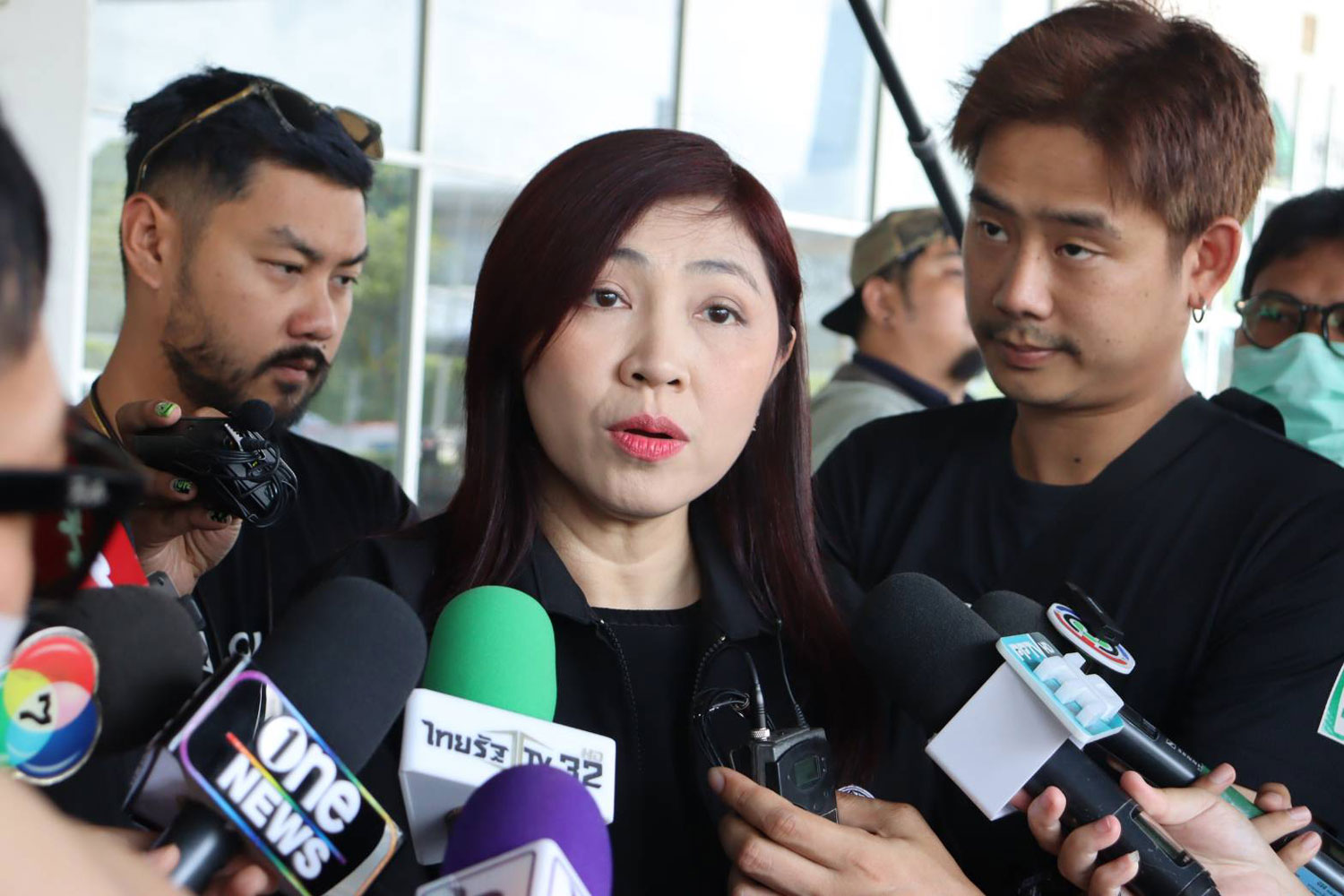
A lawyer representing alleged serial killer Sararat “Aem” Rangsiwuthaporn has denied charges of assisting her client in destroying or concealing evidence of her crimes.
Thannicha Aeksuwannawat, Ms Sararat’s lawyer, arrived at the Crime Suppression Division’s head office on Friday to report to CSD commander Pol Col Anek Taosuparp after a summons warrant was issued for her to meet investigators on May 29 or May 30.
The lawyer reported to the police ahead of schedule to face charges of aiding another person in evading punishment or receiving a reduced penalty by destroying or concealing evidence of crimes, in violation of Section 184. She was accompanied by her fellow lawyer Chaiya Khum-am.
Following two hours of questioning, Ms Thannicha told reporters that she met the investigators to acknowledge the charges after a suspect in the case accused her of orchestrating the concealment of evidence. Although she did not name the suspect, it was apparently that she referred to her client’s former husband, Pol Lt Col Withoon Rangsiwuthaporn.
Ms Sararat, 36, dubbed “Aem Cyanide”, was arrested on April 25 at Chaeng Watthana Government Complex in Bangkok while being four months pregnant. Her arrest was prompted by a complaint filed by the mother and elder sister of Siriporn “Koy” Khanwong, 32, of Kanchanaburi.
Siriporn had collapsed and died beside the Mae Klong River in Ban Pong district of Ratchaburi, where she had accompanied Ms Sararat to release fish as part of a merit-making activity on April 14. Cyanide was found in Siriporn’s body, and the list of alleged victims has continued to grow.
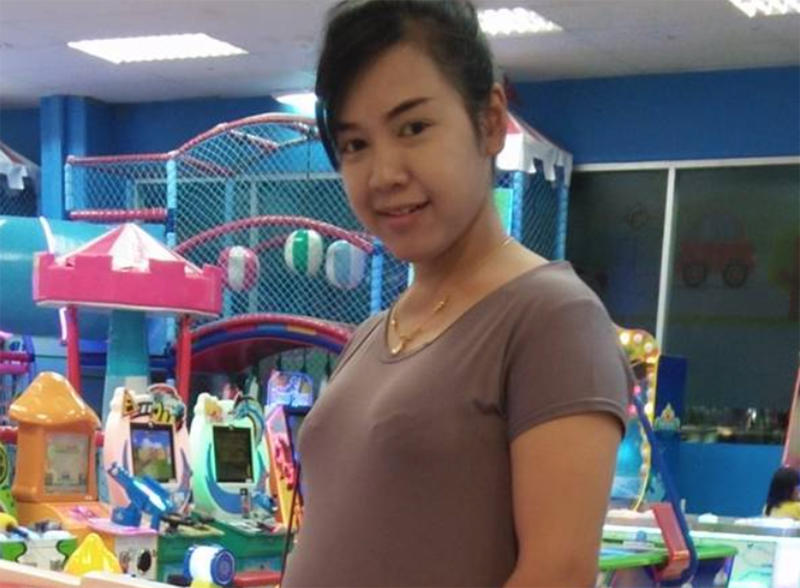
Sararat: Linked to about 14 deaths (Screen capture)
Pol Lt Col Withoon, 39, the deputy superintendent of the Suan Phueng station in Ratchaburi, was fired from the force. He was subsequently arrested on charges of receiving stolen property, jointly forging official ducuments and using forged official documents. The Nakhon Pathom Provincial Court granted him bail.
Ms Thannicha denied sending Siriporn’s bag to a woman identified as Kaew, as claimed. She raised questions over why her accuser, referring to Ms Sararat’s former police husband, sought to implicate her.
The lawyer said she would file defamation suits against certain police officers and media outlets. She expressed no concerns about the possibility of deputy national police chief Pol Gen Surachate Hakparn providing lawyers to help individuals facing her planned defamation suits.
Pol Col Anek said police have gathered evidence to prosecute her.
Last week, Pol Gen Surachate said an analysis of 78 million baht, which had passed through bank accounts belonging to Ms Sararat, suggested that she had a gambling habit that allegedly drove her to commit 14 murders using cyanide.
Japan budget cuts ground once-proud space program

Japan is proud to be one of the most advanced spacefaring nations, with a more than 50-year record of space launches. The H-2A and H2-B rockets have been particularly successful vehicles, boasting a success rate of over 95%.
Based on these achievements, the Japan Aerospace Exploration Agency (JAXA) initiated the H3 launch vehicle program in 2013 to replace the H-2A.
JAXA aimed to design a launch vehicle with a globally competitive cost structure and flexible configurations to accommodate user needs while preserving reliability. “Make it cheaper” became the watchword. To achieve this, the H3 adopts as many commercially available off-the-shelf items as practical, reducing the launch cost to half of the H-2A.
The agency also redesigned its production methods to incorporate the production-line concept and reduce overall production costs.
Japan has made global competitiveness a policy objective because the H3 needs to secure sufficient launch demand and further reduce costs. These cost efforts are important for Japan to continue operating space programs — particularly for national security and scientific missions — under a limited budget.
But the failure of the H3’s inaugural flight in March 2023 revealed technological concerns and raised policy questions about the benefit of cost reduction when it jeopardizes national security.
The H3 will be the sole national launch vehicle that reaches geostationary orbit after the government terminates the H-2A. There are currently no commercially available alternatives in Japan.
Given the importance of the H3 for Japan’s access to space, cost competitiveness should not be the top consideration in its development. The delay in H3 development hinders Japan’s access to space capability, especially national security missions.
Competitiveness also goes beyond cost, as it entails an efficient supply chain — ground, air and sea transportation networks — and streamlined regulations.
Japan’s national space policy leaders are not fully addressing these policy questions. On April 17, the Committee on National Space Policy and its secretariat released a draft version of its newest comprehensive national space policy.
This draft mentions the failures of Japan’s two national flagship launch vehicles, Epsilon in October 2022 and H3 in March 2023, suggesting that Japan should leverage recent losses to advance its space transportation systems.
These lessons will be incorporated into the development of the post-H3 rocket, which is expected to launch in the 2030s. The post-H3 will enhance launch capacity, increase launch frequency and further cut costs through partial reusability. In the long term, the committee envisions acquiring a fully reusable launch vehicle and a human spaceflight system.
Leaders also deem the development of launch sites that assure frequent and varied launches as indispensable. Many of these objectives can be accomplished with support from the commercial sector.
From a public policy perspective, the H3’s failure could be deemed a case where political attention surges and the impetus to change becomes strong. Leaders could leverage the H3 mishap to reform the existing policy.
One focal discussion point in reforming space policy is re-examining the policy objectives of the H3. Securing continual access to space capability should be the program’s top priority.
Before talking about H3 objectives, Japanese leaders may need to reconsider what assured access to space means to Japan. Having a space transportation system with the H3 plus an additional new launcher would be redundant from a policy perspective. But if it is perceived to be vital, then policy depending on the H3 alone must be altered.
The US government’s decision to rely on a single human spaceflight vehicle, the Space Shuttle, caused a gap in human spaceflight capability when the ship broke apart and its crewmembers died in 1986 and 2003.
As a response, the United States developed two human spaceflight systems for the post-shuttle era. One was developed by the National Aeronautics and Space Administration (NASA) and Boeing and the other was developed by SpaceX.
SpaceX was successful not only because of abundant resources but also because NASA’s Commercial Orbital Transportation Services (COTS) and Crew Resupply Services programs (CRS) provided funding and improved the predictability of future demand. Japan should re-examine whether having two national space transportation systems may be necessary for national security.
If so, programs like COTS and CRS should be adopted to stimulate domestic commercial players and develop alternative launch options. Japan could develop an alternative launch option to the H3 by incentivizing the private sector.
Now is a good time for Japan to reform its national space transportation system policy, specifically the 2014 Long-term Vision for a Space Transportation System policy, along with the new comprehensive national space policy.
The reform should streamline the national goals of space transportation systems. It should update not only rocket objectives but also launch sites, supply chains and regulations associated with specific programs.
In doing so, Japan can achieve a multispectral national space transportation system policy that truly assures sustainable access to space.
Takuya Wakimoto is Space Practice Co-lead at Deloitte Tohmatsu Space and Security.
This article was originally published by East Asia Forum and is republished under a Creative Commons license.
Economic development in Asia still faces many challenges, says China’s commerce minister
BEIJING: Economic and trade development in the Asia Pacific still faces many disturbances and challenges, China’s commerce minister Wang Wentao said. Wang made the comments at the Asia-Pacific Economic Cooperation (APEC) conference in Detroit, where he met with several leaders and exchanged views on multilateral and bilateral economic and trade issuesContinue Reading
Taiwanâs quest to upgrade battle readiness is evolving

In early May, a US delegation consisting of 25 defense contractors arrived in Taiwan for a security summit, aimed to increase interoperability between the US and Taiwanese militaries. It marks the latest step toward Taiwan’s years-long efforts to strengthen its defense capabilities and pose credible deterrence to the Chinese military.
The military relationship between Taiwan and the US expanded significantly during former president Donald Trump’s administration. Washington approved major arms sales, increased cooperation with the Taiwanese military, and conducted more naval patrols in the Taiwan Strait to emphasize the US position on Taiwan.
During President Joe Biden’s administration, it was revealed that dozens of US military personnel were training Taiwanese forces on the island since at least 2020, numbers that have increased since.
And while conscription was previously considered an outdated military policy characteristic of the Cold War, the war in Ukraine has reversed this notion. Taiwan’s attempted transition to Western-style volunteer force in previous years now appears far less credible in being able to realistically oppose the Chinese military, and Taiwan’s government has since reverted to upholding its military reserve system.
But though Taiwan’s 1.7 million reservists appear to form a formidable challenge to China’s roughly 2 million active military personnel, Taiwan’s forces largely exist only on paper. Its military currently only has 169,000 active members and an estimated 300,000 combat-ready reservists, according to Wang Ting-yu of Taiwan’s ruling Democratic Progressive Party (DPP).
The Taiwanese government was therefore quick to explore increasing training times for reservists after the outbreak of war in Ukraine, and in December 2022 lengthened conscription from four months to one year, bringing praise from the US. By boosting pay and training, the Taiwanese government hopes to bolster its forces and bring it closer to South Korea’s 18-month compulsory military service.
Asymmetric forces
But China’s population of 1.4 billion dwarfs Taiwan’s mere 23 million, meaning additional Taiwanese conscription initiatives are futile if China resorts to additional conscription as well. Taiwan’s US$19 billion defense budget also pales in comparison to the $230 billion spent by Beijing.
Washington’s hypothetical efforts to resupply the relatively isolated island of Taiwan during a conflict would meanwhile prove far more difficult than the ongoing Western effort to assist Ukraine. While stockpiling weapons could partially negate this issue, a prolonged conflict or blockade of Taiwan by China would steadily diminish Taiwan’s ability to continue fighting.
With the inherent disadvantages of the Taiwanese armed forces and the unwillingness of even the US to commit officially to the island’s defense, Taiwan’s government has explored increasing engagement with the private sphere to ensure its security. This month’s US contractors’ visit was just part of Taiwan’s recent efforts to increase engagement with both domestic and foreign private military firms.
Before the breakout of conflict in Ukraine in 2022, Taiwan had taken incremental steps toward greater privatization in its defense sector, such as privatizing the state aircraft manufacturer Aerospace Industrial Development Corporation in 2014.
However, the war in Ukraine completely altered the Taiwanese government’s view of private war. Russian private military and security companies (PMSCs) have been active in Ukraine since 2014, while the Russian PMSC known as Wagner has played an essential part in the war and in Russian propaganda.
Various Western and Russian PMSCs are also fighting in Ukraine, while Chinese civilian drones have been used to great effect by both sides.
The Taiwanese government has since taken significant steps in engaging with Taiwan’s private sector to increase drone production. But more notable are the proposed changes to the Private Security Services Act, which regulates PMSCs operating in Taiwan, early into the war.
Taipei has various types of private services to consider, such as those providing security, consulting, and training services, intelligence gathering, logistics support, and cyber and maritime security.
Enoch Wu, a DPP politician and a former special operations soldier, founded the security and civilian defense organization Forward Alliance in 2020. Alongside programs to treat injuries and respond to crises, Forward Alliance’s combat training programs expanded significantly after the outbreak of war in Ukraine.
The number of Taiwanese private programs run by various companies “specializing in urban warfare and firearms training” has also increased since the start of the war, according to Voice of America.
In September 2022, Taiwanese entrepreneur Robert Tsao pledged to spend US$100 million training 3 million soldiers over three years in the Kuma Academy (also known as the Black Bear Academy).
While his claims are ambitious, Russian billionaire Yevgeny Prigozhin’s financing of Wagner has already played an integral role in the war in Ukraine, at the same time drastically increasing his stature in Russia and notoriety abroad.
Because of its own limited industry, any Taiwanese effort to promote greater military cooperation with the private sphere would require Western assistance.
The US scrapped its mutual defense treaty with Taiwan in 1979 to normalize relations with China, but the Taiwan Relations Act enables the US to provide Taiwan with the means to defend itself, and privatization could make it easier for the West to support the Taiwanese military.
Alongside weapons deals, Western PMSCs like G4S have been active in Taiwan for more than two decades and could quickly expand their operations on the island.
Greater cooperation with Western PMSCs may not be able to help Taiwan repel a Chinese assault. But they could complement Taiwanese military efforts to create a volunteer force modeled on Ukraine’s Territorial Defense Force and advocated by former Taiwanese defense chief Admiral Lee Hsi-min.
The US has explored developing guerrilla forces in the Baltic states to harass Russian forces if they were to invade, and growing the multiple private initiatives already under way in Taiwan could form a powerful guerrilla network that could remain active even if Taiwan’s military is forced to stand down.
Limitations and dangers
But committing to privatization has its own consequences for Taiwan.
The role of Chinese PMSCs abroad has grown significantly over the last few years, with an estimated 20 to 40 Chinese active largely to guard Belt and Road Initiative (BRI) infrastructure projects.
However, China’s 7,000-plus PMSCs operating domestically “suggests ample opportunity for the future growth of internationally active” Chinese firms according to the Center for Strategic and International Studies.
And, while Chinese law prohibits them from using force abroad except for defense, Beijing’s assertion that Taiwan is part of China’s territory could erode legal and political barriers to using them.
In recent years, China has also deputized maritime militias of fishing boats to swarm parts of the South China Sea and establish control over certain areas. By collaborating with Chinese PMSCs, these militias could even avoid Taiwan and surround the Kinmen, Matsu, or uninhabited Pratas islands.
Although these islands are claimed by Taiwan, they are geographically closer to China. This could be justified on the grounds of economic interests or security concerns. The use of these fishing militias to harass Taiwan could make up for significant underdevelopment in Chinese PMSC capabilities and help China to avoid using its official military forces.
The scale of cooperation between the Taiwanese government and private military actors is so far limited. But Taiwan’s manpower shortages and lack of official military and diplomatic ties have made the prospect of private military assistance far more attractive.
The lack of international regulations sustaining Taiwan’s recent increased engagement with the private military sphere, however, will further encourage China to respond in kind.
Ukrainian oligarchs turned to PMSCs to protect their assets in Ukraine after 2014, while Kiev has come to lean heavily on foreign PMSCs to supplement the war effort. Wagner and other Russian PMSCs have meanwhile grown in importance to Russian military efforts in Ukraine as well.
The growing power of PMSCs in Ukraine, as well as worldwide, suggests further military privatization of the dispute over Taiwan may be inevitable.
This article was produced by Globetrotter, which provided it to Asia Times.

